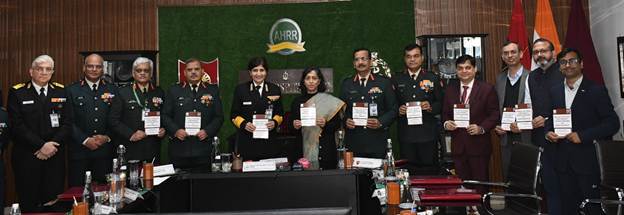
Representative picture
Washington/Beijing: The balloon issue escalates with the United States claiming to have shot down four flying objects in US and Canadian airspace in recent days, one of which was a balloon claimed by China. About the other three unmanned flying objects, China today went on to describe their downing with advanced missiles as a “trigger-happy overreaction”.
Although neither the Americans nor the Canadians have officially said what they are or where they come from, Senate Majority Leader Chuck Schumer said it was likely that they were a fleet of balloons from China. On the question that whether the three objects belonged to China, Chinese foreign ministry spokesperson Wang Wenbin today remarked, “We believe that no irresponsible comments should be made when there is no clear evidence. And we are absolutely opposed to made-up stories and smears against China”.
Counter-attacking the US by claiming it to be the “number one surveillance country” which has the “largest spy network in the world”, China hit back by accusing the US National Security Agency of having spied on “calls and chat messages to and from the phones of leaders of Germany, France, Norway, Sweden, the Netherlands and other European countries”.
Wenbin today told reporters in Beijing that the US has been operating a highly secretive signals intelligence collection programme through almost a hundred US embassies and consulates worldwide.
As to the Chinese balloon that was shot down by the USA ten days ago, Wenbin reiterated, “We have made it clear time and again that the entry of the Chinese civilian unmanned airship into US airspace was a purely unintended, unexpected and isolated event caused by force majeure”.
However, the US has been analysing the first balloon’s components to “learn more about the surveillance programme”. Media reports suggest that US officials believe from that balloon that they’ve discovered the payload. The United States is also exploring taking action against Chinese entities linked to the People’s Liberation Army (PLA) that Washington believes supported the balloon’s incursion into US airspace. The US also plans to look at broader efforts to expose and address China’s larger surveillance activities that pose a threat to the security of the US and its allies and partners. The US has gone on record claiming about previous violations of the sovereignty of some 40 countries across five continents by China – that China had similar incursions that breached the security of these countries over the years.
However, the US claim has invited wider scepticism as to how it could gather such information. The question being asked is whether the US itself was conducting exactly the same kind of surveillance over these countries that it has been accusing the Chinese of doing over the US.
The US has refused to reveal sources and methods it adapted to gather such information about Chinese incursions in these 40 countries on grounds that it would weaken its defences against a programme like this or any other type of surveillance program that China or any other competitor might have aimed at Washington and its partners and allies around the world.
“There are a number of countries with whom we consult very closely about these challenges. We work very closely, and coordinate our approach so that it’s most effective. We do that with Europe; we do that with countries in the Indo-Pacific; we do that with countries in the Western Hemisphere; and we do that with countries in Africa, among other places,” US State Department spokesperson Ned Price sought to clarify.
China, however, charged today that the US has been operating a highly secretive signals intelligence collection programme through almost a hundred US embassies and consulates worldwide. “Anzer, a cybersecurity information platform, revealed last year that the NSA stole more than 97 billion pieces of global internet data and 124 billion phone records in 30 days, compromising the privacy of citizens across the world. Namibia recently found in its waters a US sail drone used to gather data underwater, and local media generally believe it to be an American spy drone. The US knows how many surveillance balloons it has sent into the skies in the world. It’s quite clear to the global community which country is the No.1 spy empire in the world,” Wenbin said. He added: “Over the years, the US has been engaged in massive, non-discriminate wiretapping and secret theft operations globally, including against its allies, by abusing its tech advantage. These operations violate the sovereignty and interests of countries around the world, the international law and basic norms governing international relations, which makes the US the absolute No.1 country in terms of spying and surveillance.”
China further hit back claiming that the US military vessels and aircraft conduct frequent close-in reconnaissance on China, including 657 sorties last year and 64 sorties in January this year in the South China Sea alone, which seriously undermines China’s national security and regional peace and stability. “US balloons have often entered other countries’ airspace illegally. Since last year, US high-altitude balloons have flown over Chinese airspace over ten times without authorization from China. The US needs to reflect on its own behaviour and change course rather than attacking others and stoking confrontation,” Wenbin said.
Beijing and Washington, though, have maintained the necessary communication but the former acknowledged that what was important was to properly handle this “unexpected situation caused by force majeure in a calm, professional and restrained manner”.
As for Washington, it has sent a “clear message” to Beijing that the violation of the USA’s sovereignty was “unacceptable”.
“Our approach to China is clear: We are in competition, but we are going to keep our lines of communication open. And we have a very good and clear track record of that,” a US State Department spokesperson stated.
The US said it has been under no illusions about the challenges that China presents. “We’ve always known this is a relationship that is competitive at its core, that has potentially conflictual areas that we’re determined to see don’t veer into actual conflict, but also areas in which we must in some ways work together if we’re going to address challenges, threats to the American people and to people around the world,” Price said. He added: “But we’ve always been attuned to these challenges and, more than that, attuned to the need to manage this relationship responsibly.”
– global bihari bureau





